

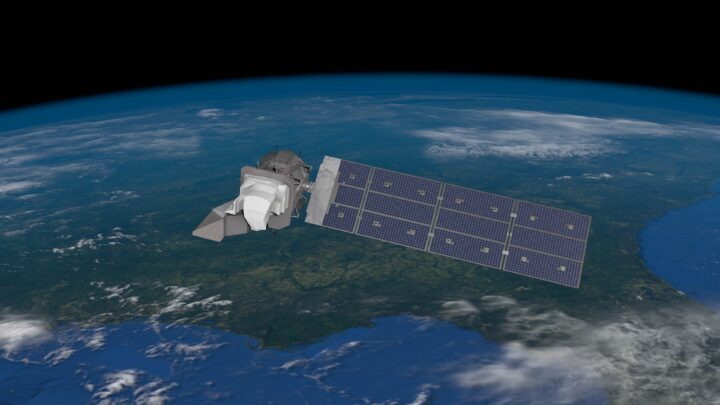
“Landsat 9 provides a critical extension of the Landsat data record for monitoring our food supplies and helping to inform and address crucial decisions in how we manage, grow and adapt our food production sustainably under a warming climate, with an increasing population and growing demand for food.”
– Chris Justice, NASA Harvest Chief Scientist, Program Scientist for NASA’s Land Cover Land Use Change (LCLUC) Program, Land Discipline Leader for the NASA Moderate Imaging Spectroradiometer (MODIS) and the Soumi-NPP VIIRS Science Team, co-chair of the GEOGLAM Initiative.
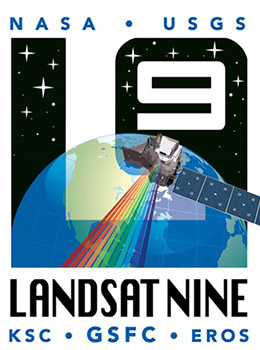
The next generation of Earth observation satellites is scheduled to launch in just a few short days. The ninth sensor in the NASA/USGS Landsat program will continue the mission’s critical work in monitoring how the surface of the Earth has changed in the near-50 years since the first Landsat satellite was launched. Landsat has enabled a number of applications in diverse fields including forest management, fire, and climate. The system has also found extensive use in monitoring global agriculture and food security applications.
Landsat revolutionized what it means to monitor agriculture, analyze crop conditions and estimate crop yields. Provided by advancements in satellite imagery and technology, the ability to remotely monitor crops over large areas and in difficult to access places on a regular basis has lowered on-the-ground labor requirements while simultaneously increasing the amount of analysis that can be performed. Advancements in spatial and temporal resolution, or how “zoomed in” and frequently the imagery is obtained, combined with new computing capabilities have created a variety of novel applications that have completely shifted what is possible in terms of agricultural monitoring and research.
NASA’s Role in Agriculture and Food Security
The first Landsat mission launched in 1972 was designed with agricultural monitoring as a key application for the Earth observations data that would be provided by satellite imagery. These initial Landsat observations were the primary tool for developing early programs for agricultural monitoring which laid the foundation for using satellite data to monitor where and when crops are growing, to observe crop condition as the growing season progresses, and to estimate crop yields and total production from space. As advances in technology and computing capabilities have increased exponentially in the last several decades, NASA has continued to play an important role in monitoring Earth’s agrifood systems.
Recognizing the growing need for a dedicated program focused on food production and access, NASA Harvest was established in 2017 to serve as NASA’s official Agriculture and Food Security program. NASA Harvest combines Earth observation (EO) data, machine learning, and the knowledge of agricultural experts around the world to better inform agricultural decision-making at every level. NASA Harvest partners have made significant use of the Landsat program’s rich data archives in terms of advancing research in mapping crop types, monitoring agricultural conditions, estimating crop yields, and analyzing how management decisions affect productivity and market responses across agrifood systems.
Senior members of the NASA Harvest team such as Dr. Chris Justice, Dr. Matt Hansen, and Dr. Eric Vermote have been at the forefront of EO data usage and Landsat applications for several combined decades. While the first Landsat images were simply photographic products, as digital data became available in the 1970s, Dr. Justice started working on data from the first Landsat satellite (ERTS-1) and subsequent missions for land cover classification. Dr. Eric Vermote has been responsible for developing the atmospheric correction procedures for Landsat, which have been adopted by the USGS for operational use, as they moved to distributing Applications Ready Data.
Reflecting on the program, Chris Justice said “The first Landsat mission was designed with agricultural monitoring as a key application. These early Landsat observations laid the foundation for using satellite data to monitor where crops are growing; crop condition as the growing season progresses; and estimating crop yields and total production from space. Landsat allowed the USDA to develop its Cropland Data Layer program. This approach has become a gold standard among agricultural ministries for annual identification of which crops are growing in their country.
Landsat Joined By Other EO Satellites
Over the years, Landsat capability has been bolstered by other moderate resolution Earth Observation (EO) satellites from the international community, starting with the French SPOT mission in 1986. In 2014, the European Space Agency began launching its Sentinel series of satellites in close collaboration with the Landsat mission, significantly increasing the frequency of observations and adding to the amount of EO data available for research and analysis. These two programs share in the benefits of providing free and openly available medium resolution EO data to the public. As crops change and develop rapidly throughout the growing season, timely and frequent observations are critical and Landsat 9 will play an important role in increasing the frequency of observations. Between two Landsats and two sentinels, available satellite data will provide almost daily observations to observe every field across the globe.
Despite some differences in spectral and spatial resolutions, the two programs complement each other particularly well especially for agricultural applications. A recent study co-funded by NASA Harvest and co-authored by researchers of the University of Maryland’s Global Land Analysis and Discovery (GLAD) group explores how the Landsat and Sentinel satellites compare in crop classification capabilities. This research found that medium-resolution imagery from Landsat 7 and 8 performs on par with the higher spatial resolution offered by the European Space Agency’s Sentinel-1 and Sentinel-2 satellites. Specifically, both sets of satellites are able to classify corn and soybean crops with accuracies above 94% and when their imagery was combined, the team was able to reach accuracy levels of 97%.
Dr. Matt Hansen has also used Landsat data and imagery to create the Global Forest Watch (GFW) product which provides an annual Landsat-based, global tree cover map allowing users to see how the global forest footprint grows and shrinks in different locales every year. Given the relationship between cropland expansion and deforestation, GFW’s annual tree cover data product allows for better analysis of how agricultural production drives forest loss.
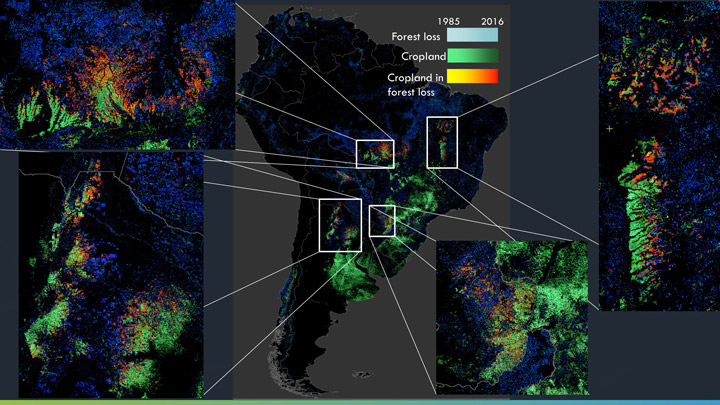
Decades of Data Enabling Long Term Analysis
The Landsat program is especially unique and useful thanks to its longevity, providing researchers with an unmatched historical data archive. Collecting data for just under fifty years, the satellite mission has enabled longitudinal studies of agricultural change that would otherwise be impossible. One team based at Stanford’s Center on Food Security and the Environment (FSE) which includes NASA Harvest partners Dr. David Lobell, Dr. Jillian Deines, and Dr. Sherrie Wang, have demonstrated this by using Landsat imagery to greatly expand the temporal range of currently available U.S. crop maps. The country-wide crop maps currently produced by the USDA as part of the Cropland Data Layer (CDL), while very accurate, only include information on crops dating back to 2008. The FSE team makes use of the Landsat archive to bolster the existing CDL dataset and map corn and soybean production across the U.S. midwest, going all the way back to 1999.
Utilizing even more of the Landsat historical data, this team has also explored how agricultural irrigation has changed in the U.S. midwest over more than three decades. Led by Dr. Jillian Deines, FSE was able to create an annual series of maps showing irrigated cropland within the High Plains Aquifer in the Central United States from 1984 to 2017. This time series of irrigated maps proves vital in understanding how irrigated agriculture is changing in one of the most agriculturally productive regions on the planet, as well as building a strong base for further research into how water conservation can preserve natural aquifers while also increasing farmer profits.
Enabling New Landsat Applications
Landsat 9 provides a critical extension of this 50 year data record for monitoring our food supplies and helping to inform and address crucial decisions in how we manage, grow and adapt our food production sustainably under a warming climate and with an increasing population. Whether it is informing farmer decisions on management practices that support soil health, supporting transparent and stable agricultural commodity markets, providing early warning of impending crop shortfalls, supporting more efficient and effective agricultural insurance schemes, or tracking agricultural expansion, the Landsat program has had an enormous impact on how we understand farming and food security since its inception. With the launch of Landsat 9, new applications can be developed and the legacy of Earth observations for informed decision making continues on.
Visit Landsat Science to learn more about the Landsat program and the upcoming launch.
How Earth observation technologies are revolutionizing global agri-food systems.
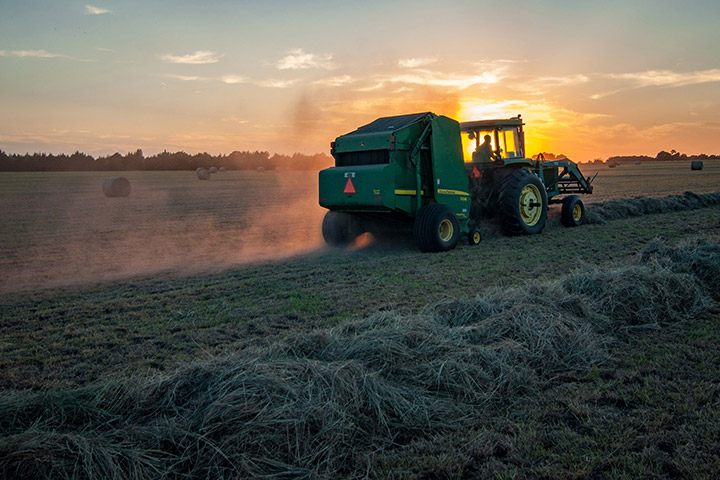
Nowadays, various forms of technology play a fundamental role in our daily routines. From the use of GPS to navigate to different places, to sharing pictures using just our smartphones, to automatic vacuum cleaners, there are endless examples. Even when it comes to the food we eat there have been so many technological advances and an immeasurable amount of research developed, particularly in the past few decades.
But one common technological thread that we can find within all of these different aspects of our lives is Earth Observation Technologies (EOT) and remote sensing. Numerous Earth observing (EO) satellites have been launched into space by NASA and other international space agencies within the last decade, serving to collect (or “remotely sense”) data about our home planet, which helps experts around the world to better understand our ecosystems and environment. We’ll take a look at agricultural production, international food markets, and global food security as an example of the importance of this remotely sensed Earth observation data.
There are several steps and many factors involved from the time a crop is grown on a plot of land to the availability of certain crops and the price volatilities eventually seen in the corresponding food market system. Because of the complicated paths of the agricultural supply chain, it is often easier to understand this relationship if we think about it as a collective “agri-food system.” Over the past decades, agri-food systems have evolved in so many aspects, but so have the EO technologies that make it easier to understand and monitor every step of this complex chain, bringing transparency and efficiency to the overall system. According to the United Nations definition, the food system includes many different factors such as: food-related resources, various food system inputs, production, transport, processing, manufacturing, retailing, and food consumption, all in addition to the overall agri-food system impacts on environment, health, and society. Many of the changes in our food systems are attributed to external and internal forces as well as feedback mechanisms among these forces.
Let’s start from the beginning—from the farm and from the plot. With the help of satellites and EOT, producers have a better understanding of weather patterns and can plan the optimal time to sow their land. With GPS-based technologies, producers can use precision agriculture to specifically apply only the needed amount of fertilizers, herbicides, and seeds. Once everything is in the ground, farmers can remotely monitor how the crops are developing from anywhere in the world, and they can even estimate the potential yield they can expect at harvest time months in advance of actual harvesting dates. Such tools are extremely important for successful financial planning. While those crops are still developing, we can use EOT to monitor agro-meteorological conditions such as temperature and precipitation, and their impacts on crop conditions—all of which help us understand if today’s conditions are following the average trends seen in previous seasons. If anomalies occur, the EOT data can warn us well in advance of a potentially catastrophic harvest season which enables earlier mitigation actions.
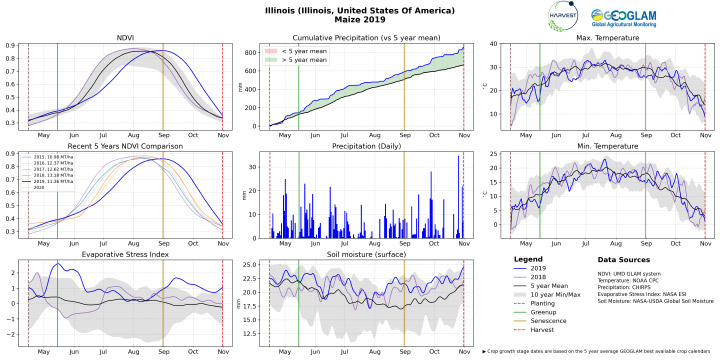
Meanwhile, as that same crop is growing, many different market actors around the world are trying to estimate how much of that crop will be successfully produced, not only in that specific region but also throughout the whole country and elsewhere around the globe. Consequently, accurate early estimates of crop area and crop yields are fundamental to the efficient and transparent functioning of global agricultural markets. And guess what? Remote sensing technologies play a critical role here too, providing key pieces of information for analyzing and developing estimates at different scales for crop area and yield, making use of NASA satellite data from missions such as MODIS, Landsat-8, and SMAP, with additional launches on the way (i.e. NISAR, Landsat-9).
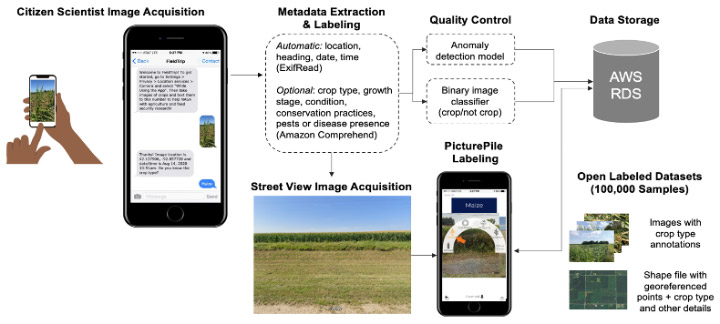
At a national level, having accurate and timely information helps policy makers to enact more suitable mitigation plans in case they need to take action if there is an unusual shock to the food system (i.e. extreme weather events, food price changes, a global pandemic, etc.), not only for countries whose economies depend on those crops to be exported but also those countries who rely on imports for their food security. EOT can also help to put many farmers literally on the map, and provide policymakers with timely tools and resources to help them. National governments can assess various crop situations using EOT and are currently monitoring the crop conditions with existing National Crop Monitors. Because the agricultural system on a whole is so dynamic, remote sensing technology can also help update estimates of crop production at a national level as the state of the agrifood system changes.
At a global level, with the help of information provided by satellite data, the early warning community (including the GEOGLAM Crop Monitor for Early Warning and various humanitarian organizations) have a better understanding of the current situation and can utilize early warning information for early action to more efficiently allocate aid where and when needed. Crop production estimates play an important role in price volatility in different markets, both domestically and internationally, which highlights the need for accurate, cost-effective, and frequent agrifood system monitoring. International communities, such as the Agricultural Market Information System (AMIS), have been launched by the G20 in an effort to monitor commodity price volatility. For example, AMIS publishes a crop monitor bulletin in their monthly reports as a way of providing more transparency into agricultural markets. Timely and accurate assessments of crop harvest quantities can have a positive impact in avoiding extreme price volatility.
But going back to our crop, remote-sensing data and advanced computing capacity improve yield estimates, subsequently improving the financial planning of the producers (i.e. both small- and large-scale farming operations). Remote sensing technologies also improve field-scale nutrient management, not only helping improve sustainability of crop production but also saving on costs for the farmers. Accurate crop area estimates, especially those estimates with a regional approach, help different types of companies—including seed providers, fertilizers, herbicide producers, agriculture services, machinery companies, and many others—to better plan their marketing and distribution strategies. This information creates a more efficient allocation of resources, with benefits also being seen in often under-represented rural areas.
Moving along the food cycle to the post-harvesting stage, if there was a problem with the harvested crop then insurance providers can use remote sensing technologies to assess the situation from anywhere, minimizing cost and emissions of visiting the plots themselves. Remarkably, remote-sensing data can reduce the transaction costs associated with monitoring traditional insurance contracts, reinvigorating rural finance markets.
But the role of remote sensing technology doesn’t finish when the crop is harvested. Once the crop is out of the ground and for example, sent to the grain elevator, we can track the exact location of the vessels on which those grains are traveling and their destinations. Most recently, we were able to use Planet satellite images to spot the movements of the cargo ship that halted global trade and created a massive bottleneck in the global supply chain.
Overall, Earth observation technologies are making the interlinkages of the complex and sometimes fragile agrifood systems more transparent, accurate, and efficient, while also helping to reduce transaction cost and shedding light on the information asymmetry challenges. It almost goes without saying that science, innovation, and technology have huge impacts on understanding changes to food systems. Markets, trade, and related infrastructures—increasingly combined with digitization—are today cutting across internal and external drivers of food systems’ change (Von Braun, 2020) and digital technologies will undoubtedly continue to increase efficiency in the design and delivery of agricultural policies (Schroeder, Lampietti, & Elabed, 2021). EOT has the capacity to enable a rapid assessment of different shocks, providing a powerful tool for decision makers across the agricultural, government, and humanitarian spectrums.
References
Von Braun, J. A. (2020, October 26). Food Systems – Definition, Concept and Application for the UN Food Systems Summit.
Schroeder, K., Lampietti, J., Elabed, G. (2021, March 16). What’s Cooking : Digital Transformation of the Agrifood System.